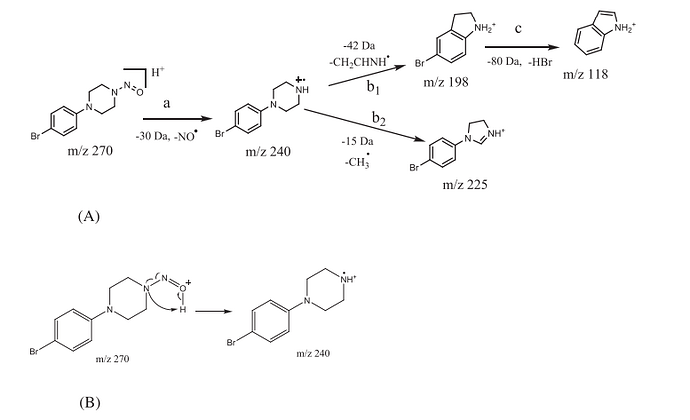Dear All,
ESI is widely employed as the primary ionization source in LC-MS/MS due to its high efficiency in generating ions from target analytes. During ESI, precursor ions are typically generated within the ESI source and subsequently undergo dissociation in the collision cell through a process known as Collision Induced Dissociation (CID).
However, it is crucial to acknowledge that analytes can undergo fragmentation even before reaching the collision cell, directly within the ESI source itself. This phenomenon is known as in-source fragmentation and occurs between the atmospheric pressure region of the ion source and the high-vacuum region of the mass analyzer.
The occurrence of fragment ions during in-source fragmentation is a consequence of collisions between ions and surrounding species, facilitated by the application of voltages. These collisions impart sufficient energy to the analyte ions, resulting in their fragmentation. In-source fragmentation significantly affects the observed mass spectra, thereby influencing the identification and quantification of the target analytes (Journal of Chromatography A 1633 (2020) 461637).
In the case of NDSRIs, the presence of the nitroso group renders these compounds particularly prone to a specific type of in-source fragmentation, namely the loss of 30 Da. This corresponds to the detachment of the NO radical from the protonated nitrosamine compound. This phenomenon is frequently observed during the ionization process of NDSRIs in LC-MS/MS analyses, as illustrated in the figure below:
Source: Rapid Commun Mass Spectrom. 2022;36:e9261
To control or minimize the occurrence of in-source fragmentation, several measures can be implemented:
-
One such approach involves adjusting the settings of the decluster potential (DP) or fragmentor voltage. Increasing these parameters can intensify in-source fragmentation, whereas decreasing them can help mitigate the issue.
-
Another critical factor to consider is the temperature of the ion source. Higher source temperatures can accelerate analyte dissociation, leading to more pronounced in-source fragmentation. Hence, optimizing the source temperature is crucial to preserve the integrity of the analytes during ionization.
By comprehending the phenomenon of in-source fragmentation and its potential implications, analytical scientists can employ appropriate strategies to mitigate its effects and ensure accurate and reliable analysis of NDSRIs in LC-MS/MS studies.
Have you encountered this phenomenon of in-source fragmentation, particularly the loss of NO during ionization, in your own analyses? Feel free to share your experiences and any additional tips you have found valuable in controlling or avoiding this phenomenon.
